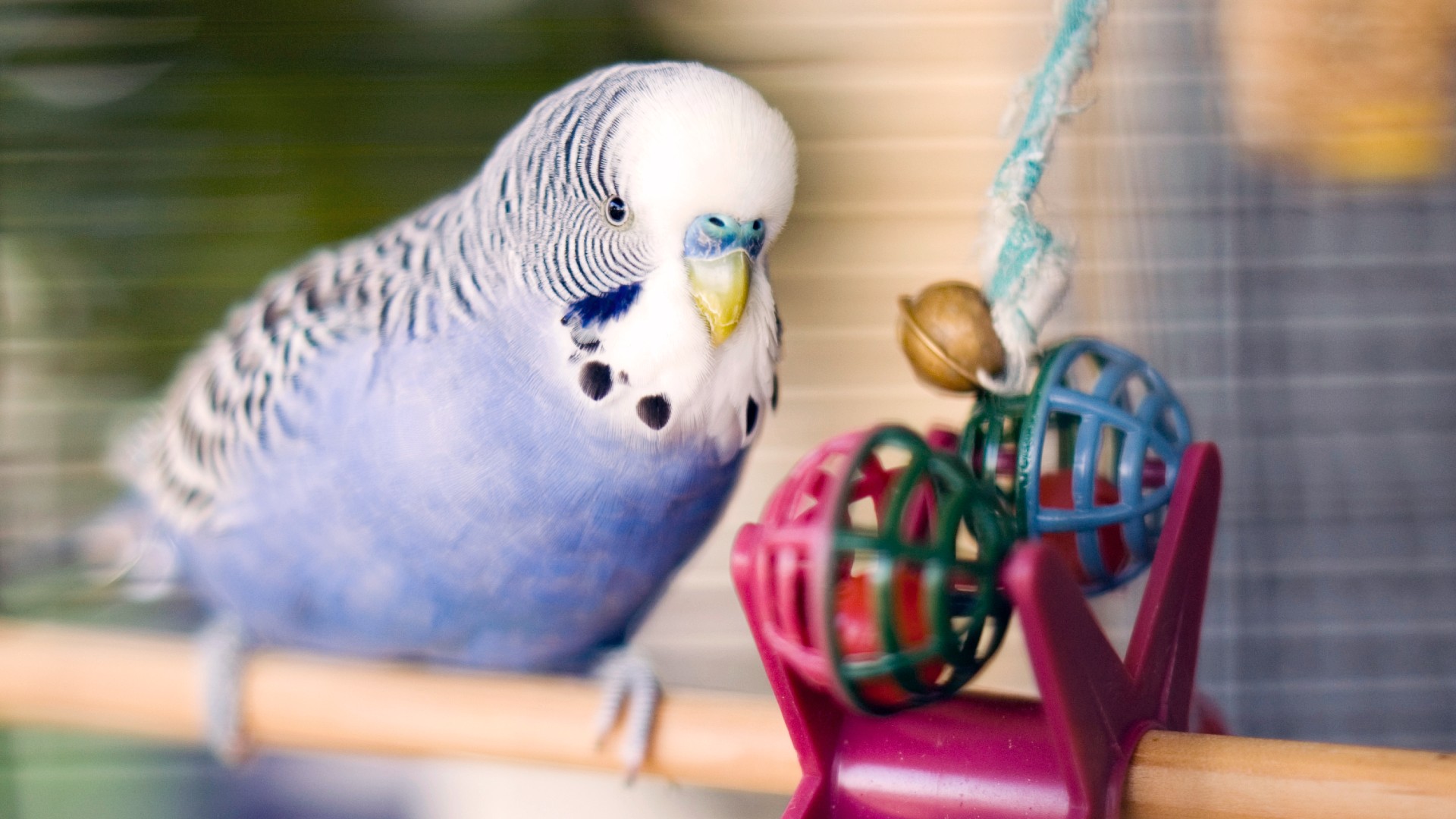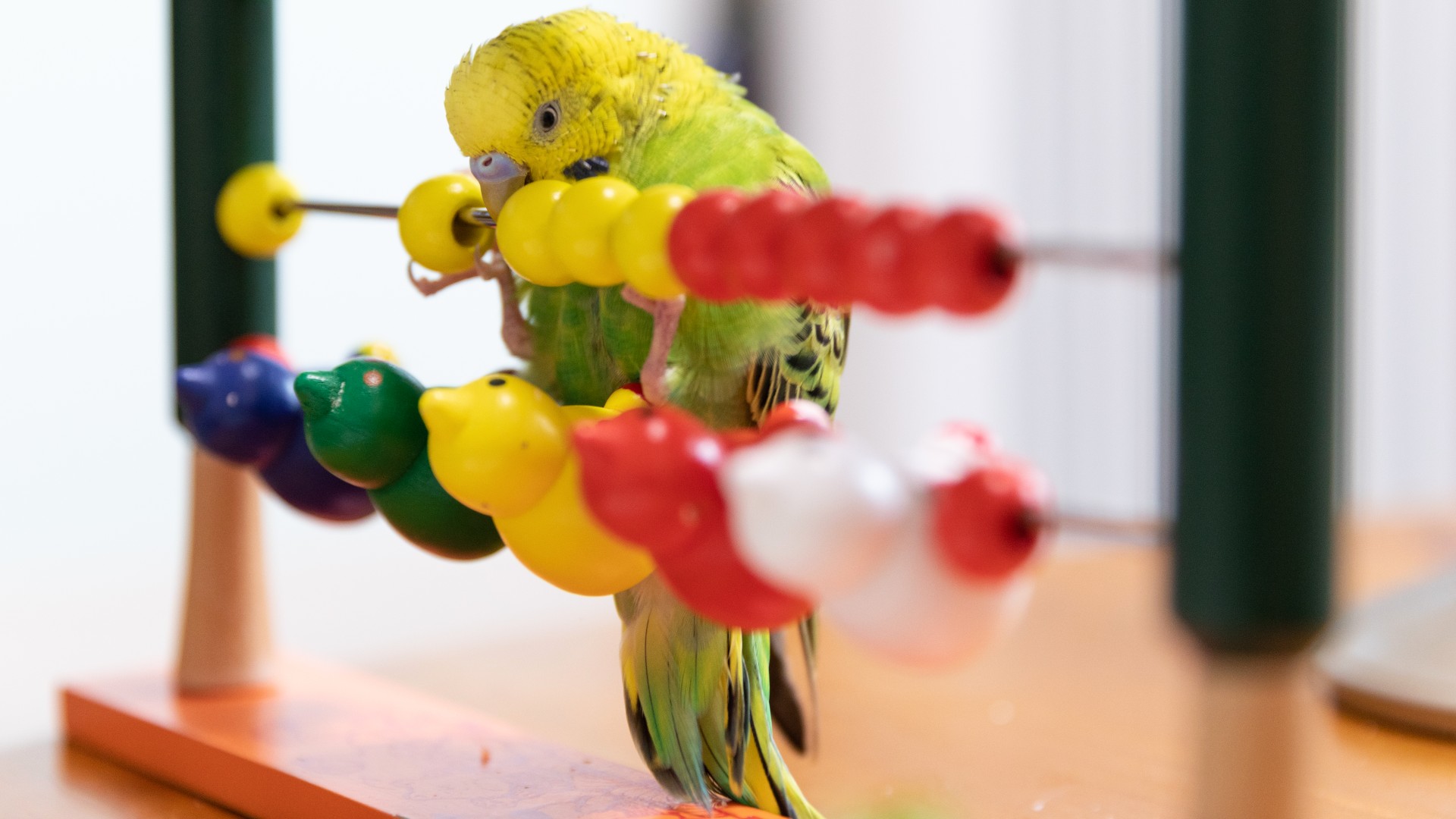Parrot enrichment ideas: Foraging and fun activities to keep your bird busy
From the visual to the auditory and everything in between, these parrot enrichment ideas will keep your feathered friend feeling their best

Parrot enrichment is a term you may have come across if you’ve been thinking about welcoming a feathered friend into your home or already count one as a much-loved member of your family.
The question of should you get a parrot for a pet is an important one to consider if you’ve not yet taken the plunge because, while they may look like they’d be easy to care for, parrots are much like dogs and cats in that they require a decade-long commitment and come with their own unique needs.
Two of these center around their need for daily physical and mental stimulation, which is where enrichment is so important. Just like us, parrots can get bored, stressed, depressed, and anxious when they don’t have enough to challenge them, and this can lead to a range of destructive behaviors.
Investing in several of the best toys for parrots and placing these in their cage can really help with this, but there are also lots of other forms of enrichment you can use to keep your parrot happy and healthy.
Let’s take a look at some simple yet effective ways that you can keep your feathered friend physically and mentally sharp, including our favorite visual, auditory, and food-based enrichment ideas. But first, a quick recap on why parrots need enrichment.
Why is parrot enrichment so important?
It’s easy to think that purchasing one of the best parrot cages and popping in a few fun toys is all it takes to keep our feathered friends thriving, but enrichment is actually more complex than that - and so too, are parrots.
While they come in a range of different breeds and sport every shade of feather color under the sun, what all parrots share in common is their high level of intelligence. And what does any intelligent animal hate? Yes, you guessed it, being bored.
A lack of physical and mental enrichment activities can lead your parrot to display a range of negative behaviors, including feather plucking, excessive vocalization, and an increased fearfulness of people. They can also become moody, depressed, anxious and withdrawn.
The good news is, that all of these issues can be remedied by providing appropriate enrichment activities in a variety of different ways to keep your parrot on their toes. Giving your feathered friend plenty of stimulation will ensure they stay happy and healthy and we have a ton of great ideas below.
Visual enrichment
Most parrots originate from tropical or subtropical areas that are teeming with lush plants, vibrant flowers and a range of wildlife. In their natural environment there’s a lot going on visually and it can help to recreate a little bit of this in and around their cage. Here are a few tips:
- Make sure their cage is placed on a table or other piece of furniture that allows for a certain degree of elevation. This will let your parrot see what’s going on around them and eliminate some of the vulnerability they feel when their cage is on the floor
- Pop them in a room that has a regular flow of traffic so that they can watch your comings and goings, but avoid anything too busy or noisy
- Place several perches in their cage at varying heights and angles so that they get different views
- Make their cage environment interesting by including branches, leaves and wreaths
- Provide a selection of brightly colored toys
All of these ideas will tick the box of visual enrichment and give your parrot plenty of stimulating things to look at.

Auditory enrichment
Another enrichment aspect you’ll want to consider is what your parrot has to listen to. While parrots are visual creatures first, their hearing is their second most relied upon sense, so it’s vital to tap into that. Here’s how you can do it:
- Play soft and soothing music for your feathered friend - they’re particularly fond of classical music without lyrics, natural sounds like rainforest noises, folk songs, or chiming bells. Avoid anything with heavy instruments, such as drums, which they can find frightening
- Pop on a YouTube video that has been specifically made for parrots - this will also provide visual enrichment
- Speak to your parrot
You’ll find some parrots love music so much that they’ll even dance along to it, which can provide them with a great workout!
Foraging and food-based enrichment
Trying out a range of foraging ideas for parrots can be a great way of providing enrichment and let’s face it, food makes everything more fun! Choosing the right food can also give your parrot a much needed mood-boost and foraging taps into one of their favorite natural instincts, so combining the two is a win-win.
- Weave leafy green vegetables through the bars of your parrot's cage
- Make fruit and vegetable kebabs and hang them from the ceiling of your parrot's cage
- Make a DIY foraging box and stuff it with shredded paper, toilet rolls, egg cartons and other items before hiding food in it
- Smear pine cones with almond butter and place around their cage
- Create a food foraging trail by scattering food items on the floor of their cage
- Hide food in puzzle boxes and make your parrot work to release it
Foraging activities don’t always have to be food-based either. You can drill holes in a PVC tube and stuff it with popsicle sticks that your parrot has to dig out, place beads and buttons in a box, or make a wreath out of leather strips or cotton that your feathered friend has to unravel.
Environmental enrichment ideas
One of the most important ways that you can provide your parrot with enrichment is to make their home feel like a home. Make it safe, secure and stimulating, and you’ll find your feathered friend thrives throughout the years you share together.
After you’ve picked out the right size cage for your parrot, be sure to include the following:
- Several perches of different sizes that are placed at various heights and angles
- Ladders for your parrot to climb
- Swings for them to play on
- A variety of toys - including puzzle options
While mirror toys have always been popular, try and avoid these. It can actually be hard for parrots to distinguish between themselves and other birds, and mirrors can cause them to mistakenly believe there’s another parrot in their cage, which may lead them to feel stressed and anxious.
PetsRadar Newsletter
Get the best advice, tips and top tech for your beloved Pets

Kathryn is a freelance writer who has been a member of the PetsRadar family since it launched in 2020. Highly experienced in her field, she's driven by a desire to provide pet parents with accurate, timely, and informative content that enables them to provide their fur friends with everything they need to thrive. Kathryn works closely with vets and trainers to ensure all articles offer the most up-to-date information across a range of pet-related fields, from insights into health and behavior issues to tips on products and training. When she’s not busy crafting the perfect sentence for her features, buying guides and news pieces, she can be found hanging out with her family (which includes one super sassy cat), drinking copious amounts of Jasmine tea and reading all the books.
